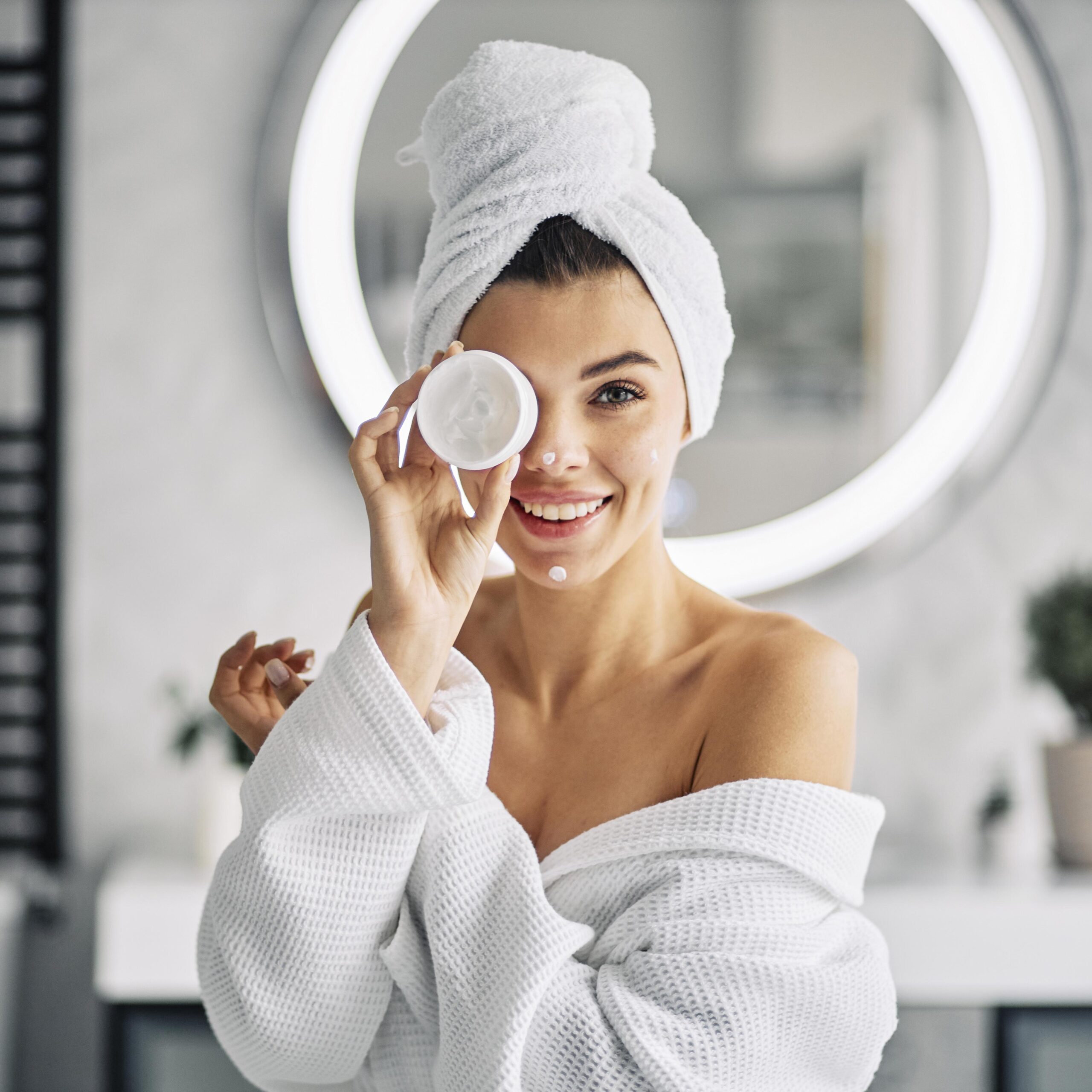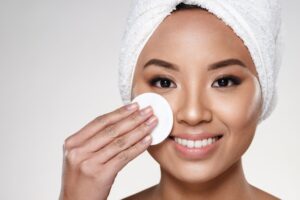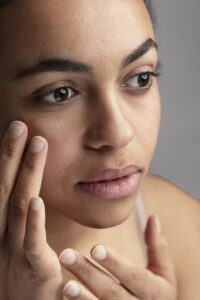Everyone is blessed with a particular skin type—oily, dry, combination, or sensitive—and each has its own unique characteristics.
However, if you fall in the first category, sit tight because this article is for you.
In the next few paragraphs, I’ll discuss the different characteristics of oily skin, the factors that contribute to it, and how you can manage it with specific skincare and makeup products.
And with that said, let’s get started! 😉
Understanding Oily Skin: Causes and Characteristics
The first thing you must understand about Oily skin is that it’s a prevalent skin type with unique challenges and needs. While some might see it as a burden due to its tendency to shine and produce excess oil, understanding oily skin can help you manage it effectively and even appreciate some of its hidden benefits.
So, what is the oily skin type like?
It is characterized by an overproduction of sebum, the natural oil produced by the sebaceous glands located in the skin’s pores. Now, sebum itself isn’t inherently bad; in fact, it plays a crucial role in protecting and hydrating the skin. However, when produced in excess, this oil can cause the skin to look shiny and greasy, particularly in areas like the forehead, nose, and chin, commonly known as the T-zone.
People with oily skin often struggle with enlarged pores, which are even more visible because they tend to get clogged with excess oil and dead skin cells. These skin cells consequently result in blackheads, whiteheads, and acne.

Several factors can contribute to oily skin, and while some are beyond our control, others can be managed with the right skincare approach.
The first one is Genetics. Genetics is the most significant factor in determining your skin type. If your parents had oily skin, you might inherit this trait, too.
Another cause is Hormonal Changes, which play a major role in sebum production. Hormone levels fluctuate during puberty, pregnancy, menstruation, or when starting or even stopping birth control, leading to increased oil production. This is why teenagers and pregnant women often experience oily skin and acne.
Climate is another factor. Your environment can influence how much oil your skin produces. For instance, hot and humid climates increase sebum production, leading to oilier skin. In contrast, those living in cooler, drier climates might notice their skin becoming less oily during certain times of the year.
Diet is also crucial. While the direct link between diet and oily skin isn’t fully understood, certain foods, like those high in sugar or refined carbohydrates, can trigger inflammation and increase oil production. Other possible causes of oily skin are incorrect Skincare, stress, and medications.
So, now that we know the different causes of oily skin let’s see how you can manage it.
Skincare for Oily Skin: Cleansers and Toners and Moisturizers
Managing oily skin effectively requires a consistent skincare routine tailored to controlling excess oil without stripping the skin of its essential moisture. This involves selecting the right products and following a regimen that helps to balance oil production.
The three crucial major products are your cleansers, toners, and moisturizers.
Let’s start with the first one
Oil-Control Cleansers
Cleansing is the foundation of any skincare routine, and choosing the right cleanser is crucial for those with oily skin. The goal is to remove excess oil and impurities without overdrying the skin, and this involves avoiding overly harsh cleansers that can trigger more oil production as the skin tries to compensate for the loss.
The best cleansers for this skin type are Foaming Cleansers, Clay Cleansers, Gel-Based Cleansers, and even Micellar Water.
Foaming cleansers are particularly popular among those with oily skin because they effectively remove excess oil and leave the skin feeling fresh. Gel cleansers are also good because they are lightweight and refreshing, removing oil without leaving a heavy residue.
Likewise, clay cleansers absorb excess oil and impurities from the skin, making them an excellent choice for oily skin. And, of course, there’s Micellar Water, best known for its gentle yet effective cleansing. Micellar water contains tiny micelles that attract dirt, oil, and makeup, lifting them away from the skin without harsh rubbing or rinsing.
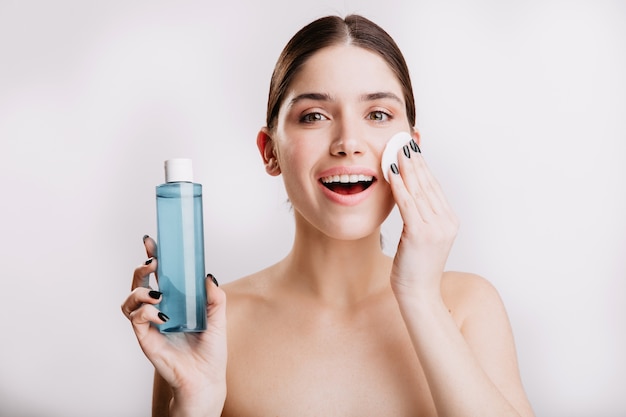
When choosing an oil-control cleanser, it’s essential to avoid products that contain alcohol or other astringent ingredients that can strip the skin. Instead, opt for cleansers that are labelled as non-comedogenic and specifically formulated for oily or acne-prone skin.
Next,
Oil-Control Toners
Toning is an important step for oily skin after cleansing. This process helps to remove any remaining traces of oil, dirt, and makeup that may have been left behind after cleansing. Toners also balance the skin’s pH level, tighten pores, and prep the skin for the next steps in your skincare routine.
The best toners to use are Astringent Toners, Exfoliating Toners, Hydrating Toners, and mattifying toners.
Astringent toners are designed to control oil production and reduce the appearance of pores while Exfoliating toners contain acids like alpha hydroxy acids (AHAs) or beta hydroxy acids (BHAs) that help to remove dead skin cells and prevent oil buildup.
Now, Hydrating Toners, as the name implies, might seem counterintuitive. I mean, why hydrate an oily skin?
Well, sit tight because the benefits will surprise you!
Hydrating toners typically contain ingredients like hyaluronic acid or glycerin, which help to hydrate the skin. But here’s the thing – these ingredients hydrate without adding extra oil.
Contrary to what many believe, keeping the skin adequately hydrated can help regulate oil production, while overly dry skin can lead to increased sebum production. Mattifying toners also work similarly. However, as opposed to hydrating, these toners control shine and keep the skin matte throughout the day.
Moisturizers
Every skin type needs to be moisturized—this includes oily skin. If you have oily skin, skipping moisturizer can actually cause your skin to produce more oil to compensate for the lack of hydration. So, instead of correcting the problem, you’re actually adding to it.
You want to use lightweight, oil-free moisturizers. You can also opt for gel-based moisturizers that hydrate without clogging pores.
Mattifying Primers and Setting Sprays for Long-Lasting Makeup
Achieving long-lasting makeup is often a top priority, especially when aiming for a flawless look that can withstand a full day of activities or a special event. However, the overproduction of oil can also make it challenging to keep makeup in place, as it tends to break down and slide off throughout the day.
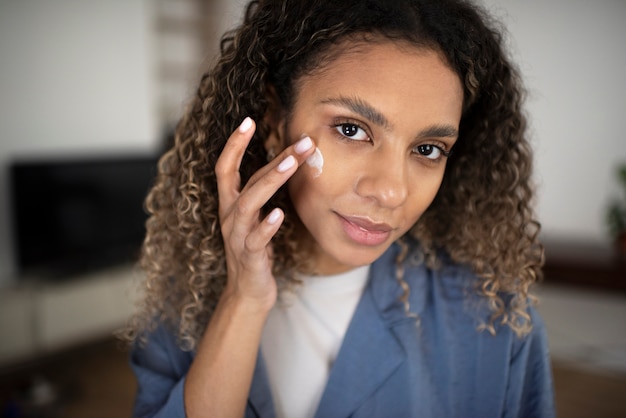
Luckily, two key products can significantly improve the longevity and appearance of your makeup: mattifying primers and setting sprays. These products create a smooth, matte base and lock everything in place, helping your makeup stay fresh and shine-free for hours.
Mattifying primers, in particular, are beneficial for those with oily or combination skin, although anyone looking for a more polished, long-lasting finish can still use them.
While these primers are crucial for creating a long-lasting, shine-free base, setting spray is the final step in locking everything in place. These sprays are designed to seal your makeup, providing a protective layer that helps prevent smudging, fading, and melting throughout the day.
One last thing…
Despite the many challenges associated with oily skin, there are some advantages to this type of skin. For instance, the natural oils help to keep the skin moisturized, which can delay the appearance of fine lines and wrinkles. Also, oily skin tends to have a thicker epidermis, which can be more resilient to external irritants and environmental damage.
So, if you’re struggling with oily skin, remember it’s not much of a big deal. There are still a lot of benefits to it. 😉

